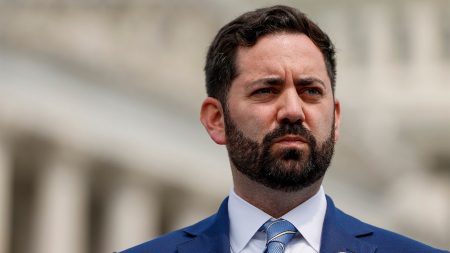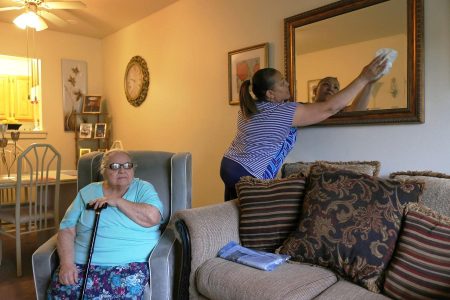Thirty-five years ago, Ken Dychtwald, PhD, wrote a landmark book, Age Wave. It was a thoughtful and well researched analysis on the impact of the baby boom population on the U.S. Dr. Dychtwald (Ken) went on to write many more books (19 in all) about the aging of America, but in this writer’s opinion, Age Wave offered us a seminal work and a prescient look at how the baby boomers, the biggest American population cohort ever, would change our country and the world – in ground-breaking and sometimes heartbreaking ways.
After the book became a bestseller, Dr. Dychtwald formed a company, AgeWave, to explore more of the concepts in the book. AgeWave has since partnered with some of the biggest financial firms, The John A. Hartford foundation, and polling organizations in the country to continue to gather more information about these demographic trends. Today, we all need to pay attention because they are having a massive impact on our health and our livelihood. The most recent study of Americans was a joint effort by The Hartford Foundation, the Harris Poll and AgeWave. Their report was released this week and I talked to Ken about some of the most important findings and their implications.
Key Survey Results
It helps to have an image of a seesaw in mind when attempting a clear understanding of the outsized influence of the baby boom population cohort. On the right end of the seesaw are the youngest generations, in the middle are those who are age 45-60 (often called Gen X), and on the left are the boomers, the youngest of whom turned 60 this year. That left end of the seesaw is pinned to the ground by the sheer weight of their numbers. And unlike previous generations, most of them are still alive and relatively healthy in their 60s and 70s. The oldest boomers are turning 80 this year.
That seesaw represents not only the outsized influence of the boomers, but also the imbalance between those who increasingly need services and aide in their journey of aging and those who will be called upon to provide and support it. The study gives us some highlights of that disparity and what it can mean for the coming decades.
The survey itself was predominantly a series of questions to older adults about their experience with the health system and assorted other services. In a nutshell, the responses boiled down to “unsettling” and “infuriating.” The unsettling part is how segmented our health system has become. Ken used an analogy of taking a car to a repair shop and being told that the car needs work and you’ll have to take it to several specialty shops: an engine shop, a brake shop, a carburetor shop, and a transmission shop in order to get the repairs done. Likewise, the bodies we live in are now treated almost exclusively in specialty clinics. The primary care doc is, at best, a quarterback for those specialty clinics. Very confusing, time consuming, and frustrating.
In addition, older adults want to be part of the medical process. They want to have their bodies treated more holistically, i.e. they want their medical providers to know and understand what matters to them, not just what’s the matter with them.
Furthermore, in case you still think the U.S. is #1 in the world in life expectancy, as we once were, you would be wrong. We are 60th. We trail countries like South Korea, Australia, and many others. In addition, the U.S. ranks even lower in “healthspan,” the number of years we live in relatively good health. Those statistics are reflected in how the survey respondents graded the healthcare system they are currently experiencing. Only 11% of survey recipients gave it an A, and the more health challenges a respondent had, the lower the grade.
Boomers Are Scared
According to the results of this survey, the biggest fear Americans have as they age is dementia, and that is understandable considering that one third of people over 85 will be receiving a diagnosis of Alzheimers or another form of dementia. As Dr. Dychtwald suggests, this horrible disease seems like a good candidate for a moonshot-like effort by our government and the medical science community in this country.
Sixty-eight percent of survey respondents confessed that one of their greatest worries was not being able to afford future health and long-term care needs. They want our government to pay more attention and focus on the following:
· Make health care more affordable
· Lower prescription drug costs for all drugs
· Have Medicare cover long-term care
· Improve the quality of nursing homes
People of all ages in the U.S. are under the mistaken notion that Medicare covers all health concerns. Unfortunately, that thinking is quite erroneous. In addition to traditional Medicare NOT
Notcoin
Income Inequality = Health Inequality
The study also pointed out how disparate health care and medical services are for different communities in this country. Some examples from the study:
· Only 23% of older adults with lower financial resources rate their physical health as excellent or very good, compared with 54% of older adults with higher financial resources
· Only 30% of rural older adults rate their physical health as excellent or very good, compared to 38% of urban/suburban respondents
· Some 44% of Black older adults and 37% of Hispanic respondents reported wanting their health care providers to spend more time discussing what matters in their health and well-being, compared to 32% of all older respondents
How Do We Get Out of This Mess??
Artificial Intelligence (AI) is capable of helping us solve some of the problems we are encountering in the challenge to provide better medical care for older adults. The ability to coordinate and incorporate all facets of health, including physical, mental, and cognitive, across providers will enable the medical community to better understand and treat the whole person, not just a piece of them. AI navigation services can also simplify access to care and allow individuals to reach providers and get the care they need.
We also need to make medical care more age friendly. Older adults face discrimination and poor treatment in many medical settings due to a lack of understanding of aging bodies and minds. In almost all medical schools, pediatrics training is mandatory, while training in geriatrics can be hard for medical students to find. In 2021, there were only 7300 board-certified geriatricians in the U.S. That equates to one geriatrician for every 10,000 older adults. In that same year, there were 60,000 practicing pediatricians. Remember the seesaw; does this make sense? As the study clearly demonstrates, we need to make basic geriatrics training standard in our medical schools.
Clearly, huge opportunities await enterprising entrepreneurs in science, technology, and medicine.
The conclusions and recommendations:
· Make basic geriatrics training and methods standard for physicians, nurses, and other health care providers.
· Redouble medical science efforts at early detection and prevention of diseases related to aging, with the specific goal of increasing healthspans.
· Scale up health-at-home and age-in-place programs to improve access to personalized care and functional support
· Develop better AI-enabled navigation services that simplify access to care and enable older adults to better understand and manage their care
· Lower costs to health care consumers, especially the costs of prescription drugs and long-term care, and screen for social determinants of health, such as social isolation
Of all the things Ken Dychtwald got right thirty-five years ago when he first conceived of the age wave, the one thing he told me he missed was anticipating the level of fear that boomers would experience in their later years…fear of illness, fear of losing their loved one(s), and fear of not being able to pay for what they need.
With a better understanding of what needs to change in healthcare and society’s behavior toward older adults in general, we can be hopeful about turning this around in time to save boomers and successive generations from the kind of inadequate treatment that many are receiving today.
If you want to learn more, you can attend a webinar and virtual discussion featuring Ken Dychtwald and Terry Fulmer, president of the John A. Hartford Foundation. Register for the webinar here.
Read the full article here













